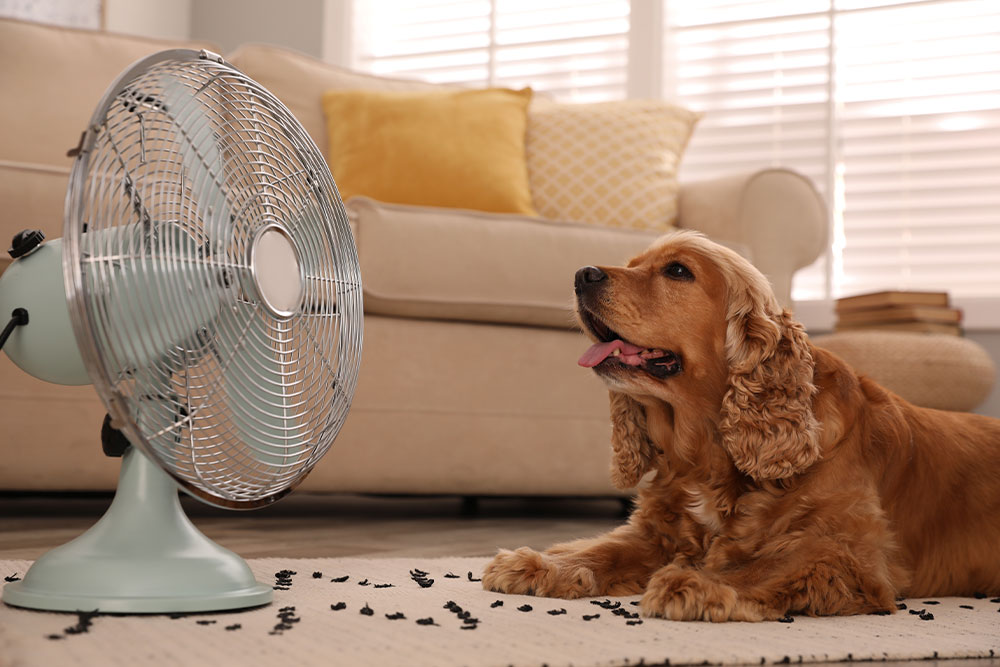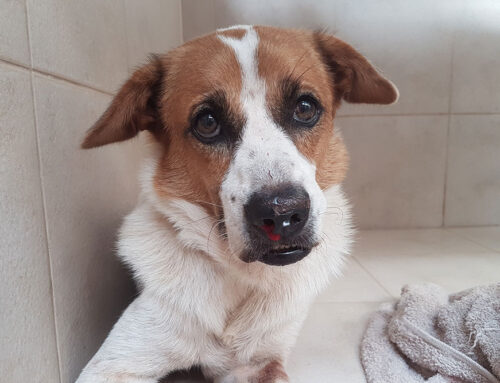As the temperatures rise in Elmira, summer becomes the perfect time for long walks, backyard barbecues, and outdoor adventures with your furry companions. But while humans can find relief in a cold drink or a shady spot, our pets are far more vulnerable to the dangers of extreme heat. At North Waterloo Veterinary Hospital, we want to ensure your pet stays safe, healthy, and happy all summer long.
This guide explores essential tips on heat safety, recognizing signs of heatstroke, and preparing for seasonal hazards. With a little prevention and a lot of awareness, you can help your pet beat the heat.
Why Pets Overheat Faster Than We Do
Unlike humans, pets have very limited ways to cool down. Dogs and cats don’t sweat through their skin—instead, they regulate their temperature primarily through panting and small sweat glands in their paw pads.
Combine this with a full fur coat, high humidity, or intense sun exposure, and it’s easy to see how quickly pets can become overheated. They also rely entirely on us to recognize their needs. Your pet can’t refill their water bowl, find shade on a leash walk, or tell you they’re too hot. It’s your job to advocate for their comfort and safety.
Never:
- Leave your pet in a parked car without A/C—even with windows cracked.
- Tie your pet to a shady tree and walk away (they can get tangled or the shade can move).
- Leave pets outside without consistent access to cool, clean water and full-shade shelter.
Do:
- Brush out thick winter coats and remove mats that trap heat.
- Monitor your pet closely during outdoor activities.
- Know when to skip the outing. Your dog doesn’t need to come to every patio dinner.
High-Risk Pets: Who Needs Extra Attention in the Heat?
Certain pets are more prone to overheating than others:
| High-Risk Group | Why They’re Vulnerable |
| Brachycephalic Breeds | Short-nosed pets like Bulldogs, Pugs, and Persians struggle to breathe efficiently. Learn more |
| Overweight Pets | Extra weight reduces heat tolerance and puts strain on organs. |
| Senior Pets | Aging bodies don’t regulate temperature as well. |
| Pets with Heart or Lung Issues | Conditions like asthma, collapsing trachea, or heart disease increase risk. |
| Thick or Dark Coated Pets | Absorb and retain more heat. |
These pets should be monitored closely in hot weather. Even short time outdoors can become dangerous quickly.
Summer Conditioning: Easing Back Into Activity
If your pet has been less active during winter, don’t jump straight into long walks or hikes. Gradually increase exercise with early-morning or late-evening strolls.
Tips:
- Watch out for hot pavement. If you can’t hold your hand on the ground for 7 seconds, it’s too hot for paws. Read: Walking On Sunshine: Protecting Pet Paws
- Get a post-winter grooming. Mats and heavy coats can trap heat.
- Let your pet set the pace and take frequent water breaks.
Recognizing Heatstroke Before It’s Too Late
Early Warning Signs:
- Heavy panting and drooling
- Bright red gums
- Seeking shade or acting restless
Severe Signs:
- Vomiting, diarrhea, or collapse
- Pale or blue gums
- Seizures or unresponsiveness
Immediate Action Steps:
- Move your pet to a shaded, cool area.
- Offer cool (not ice-cold) water.
- Apply damp towels to paws, groin, and underarms.
- Use a fan or air conditioning.
- Call your vet or emergency clinic immediately.
Learn more about emergency signs in Too Hot to Handle: Heatstroke in Pets.
Heatstroke Doesn’t End When the Heat Stops
Even after a pet cools down, heatstroke can cause serious internal damage. Watch for symptoms over the next 24–72 hours:
- Kidney failure (reduced urination, vomiting)
- Liver damage and clotting problems
- Intestinal injury (bloody stool, appetite loss)
- Neurological issues (disorientation, seizures)
- DIC (internal bleeding from widespread clotting)
Veterinary follow-up is critical, even if your pet seems “okay.”
Special Seasonal Risks for Pets
Sunburn and Skin Damage
Light-colored pets and those with thin coats can get sunburned, especially on ears, noses, and bellies. UV exposure can lead to squamous cell carcinoma and melanoma.
- Use pet-safe sunscreen when needed. Pets and Sunscreen Myths – ASPCA | Do Dogs Need Sunscreen? – NBC News
- Consider UV-protective clothing for hairless or shaved pets.
Burned Paw Pads
Hot asphalt and sand can burn pads in seconds. Booties help, but must be breathable to avoid overheating.
Eye Protection
Dogs with pannus or UV sensitivity (like German Shepherds) may benefit from pet goggles in bright light or at higher elevations.
Cooling Off: Safe Summer Fun
Water Play
Sprinklers, shaded kiddie pools, or gentle hose sprays can be excellent for cooling down. Just supervise closely!
Summer Treats & Enrichment
- Stuff a Kong with yogurt, peanut butter, or wet food and freeze.
- Try ice cube molds filled with broth and berries.
Cooling Gear
- Cooling bandanas or vests
- Elevated beds with mesh airflow
- A bin or pool with ice for lounging
Get inspired with Keeping Cool: Summer Boredom Busters for Pets.
When and How to Get Outside Safely
- Walk early or late when pavement is cool.
- Always carry extra water.
- Take breaks in the shade.
- Monitor flat-faced or senior pets closely. They may overheat quickly and without warning.
- Don’t push your pet to “keep up” on hikes or at the beach.
Keeping Cool Indoors
Inside can be just as important as outside:
- Run A/C or fans on warm days.
- Create “cool zones” on tile floors or shaded spots.
- Use puzzle toys or scent work for entertainment.
Outdoor Cats Need Summer Support Too
Outdoor cats face hidden heat risks:
- Always provide multiple shaded areas and water sources.
- Bring them indoors during heat warnings.
- Watch for open-mouth breathing, restlessness, or excessive grooming.
More tips from Cool Cats: Summer Tips for Outdoor Cats – AAHA
Don’t Forget These Additional Summer Dangers
| Hazard | Why It’s Risky |
| BBQ Foods | Grapes, onions, and fatty meats are toxic. Bones can cause choking or damage. |
| Fireworks | Noise triggers fear-based flight. Secure your pet and ID info. |
| Insects | Ticks, fleas, and mosquitoes are most active now. Avoid bee-chasing! |
| Snakes | Bites can be life-threatening. Know your region’s risk zones. Snake Safety by Region – CroFab |
Also explore 6 Summertime Dangers for Pets – AAHA
Summer Pet Safety Essentials
- Never leave pets in a parked car—heatstroke can happen in minutes.
- Check both temperature and humidity index.
- Gradually acclimate pets to the season.
- Keep fresh water available at all times.
- When in doubt, stay in or shorten your outing.
Let’s Make This a Safe Summer for All Pets
Heat safety isn’t about missing out—it’s about making smart choices so your pet can enjoy the season safely by your side. At North Waterloo Veterinary Hospital, we’re here to help you create a summer care plan tailored to your pet’s age, breed, and health.
Have questions or want to be proactive?
Book a summer wellness visit today or contact us with any concerns. Let’s work together to make this summer safe, fun, and worry-free for every family member.








Leave A Comment